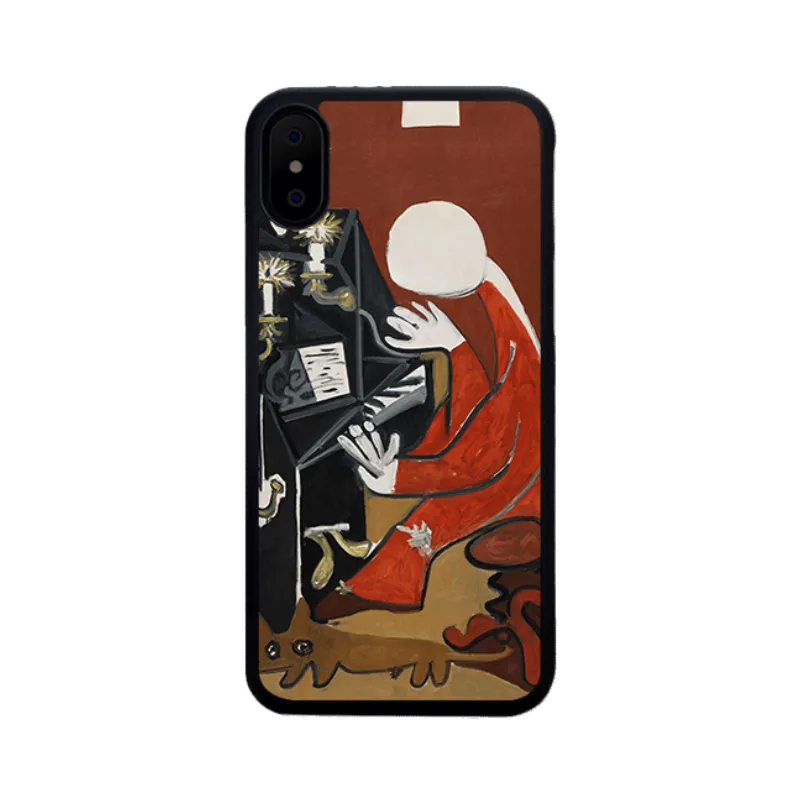— Every Case Tells a Story
More than a protective case, it’s a work of art—a mark that is uniquely yours.
In a world saturated with uniform designs and mass-produced graphics, OWAYKI returns to the origin—bringing the raw, emotional power of art back to the palm of your hand. Our Picasso-inspired collection of phone cases wasn’t created just to be different, but to tell stories. Stories of individuality, of breakthroughs, of passion, and of a rebellious spirit.
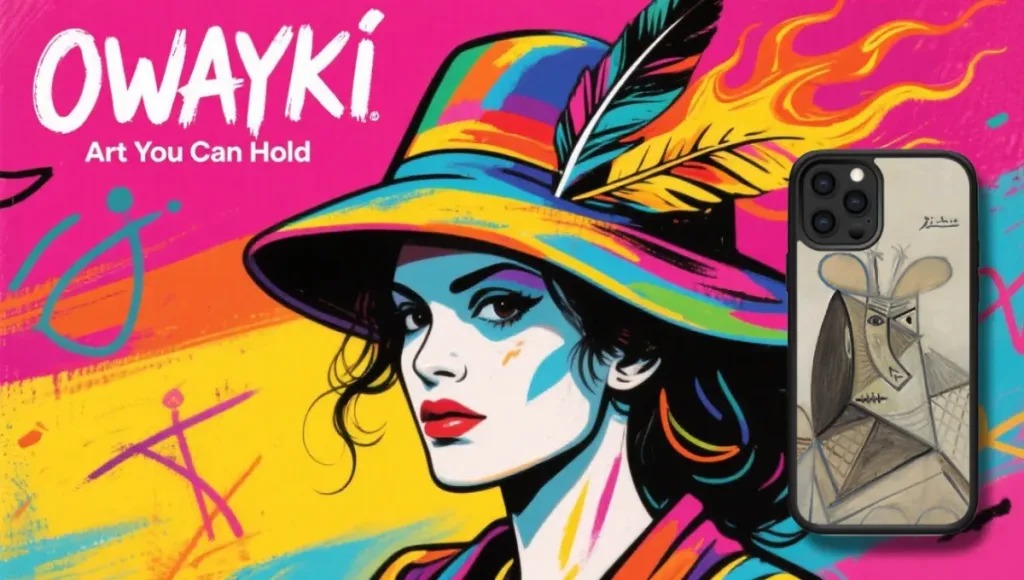
The Source of Inspiration: The Soul Under the Hat and the Cry of an Era
It was 1905, and the European art world was in the midst of a dramatic upheaval. The traditional rules of painting were being relentlessly challenged, and Picasso, a fiery young artist, stood at the epicenter of this revolution.
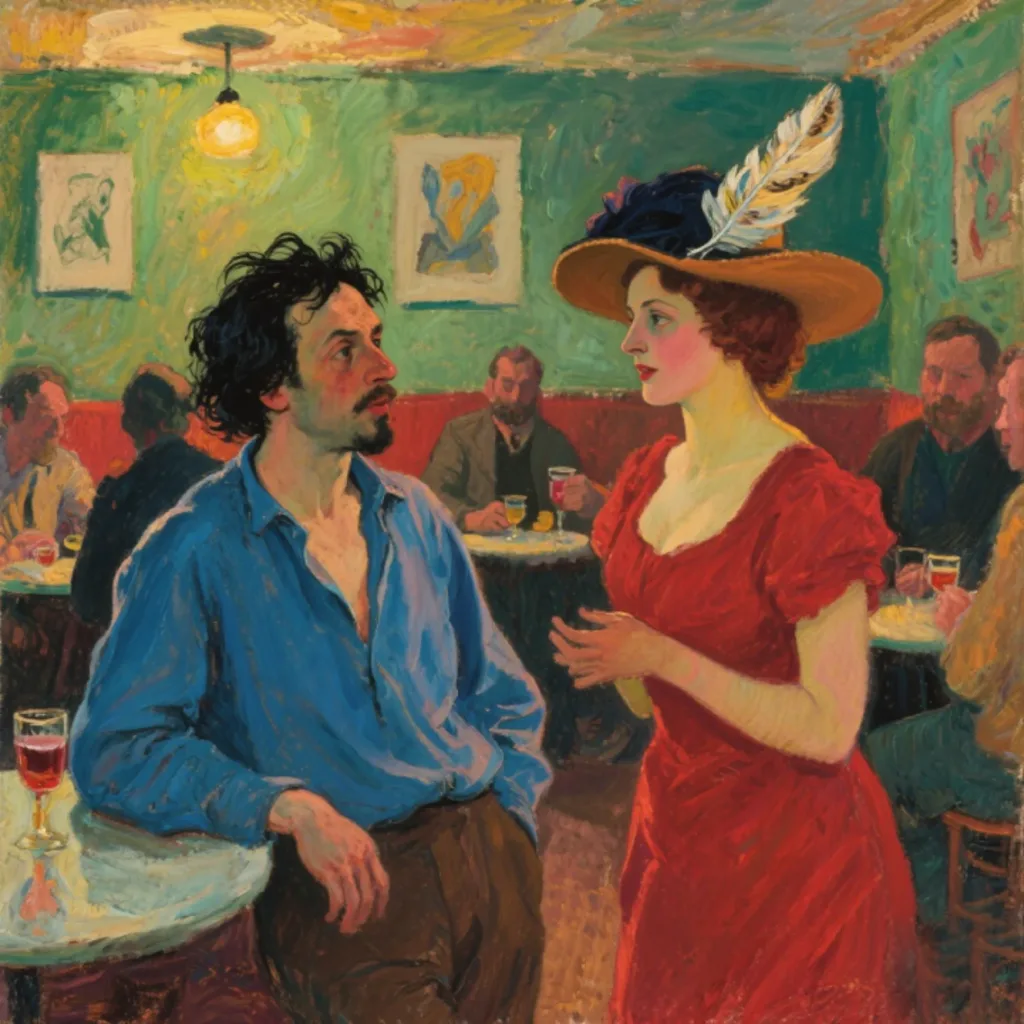
In a small tavern in Montmartre, Paris, Picasso met Olga Khokhlova. She was a ballet dancer, graceful in posture, yet her eyes held a defiant edge. What fascinated Picasso most was her obsession with hats. Whether a wide-brimmed fedora or a formal hat adorned with feathers, on her head, they seemed to come alive, becoming an extension of her personality. Olga once laughed and told Picasso, “My hat is my armor and my mask. It gives me the courage to be my true self.”
Their meeting was a fiery chemical reaction, full of passion and collision. Olga’s spirit and boldness opened a new artistic horizon for Picasso. Under her influence, he began to create with more unrestrained colors and freer lines. It was in this tumult that Woman with a Hat was born.
This was no conventional portrait, but Picasso’s courageous breakout from traditional art. In the painting, Olga’s hat is depicted as a brilliant explosion of color—red, yellow, blue, and green intertwine as if a fire were blazing. Her facial features are simplified, yet her determined jawline is outlined with exaggerated strokes. Her gaze holds a hint of provocation, mixed with a touch of mystery. Color no longer follows the laws of nature but is wielded freely according to emotional need, creating a powerful visual impact. It shattered the conventional perception of “beauty,” yet perfectly showcased Olga’s untamable personality and the rebellious spirit of the era.
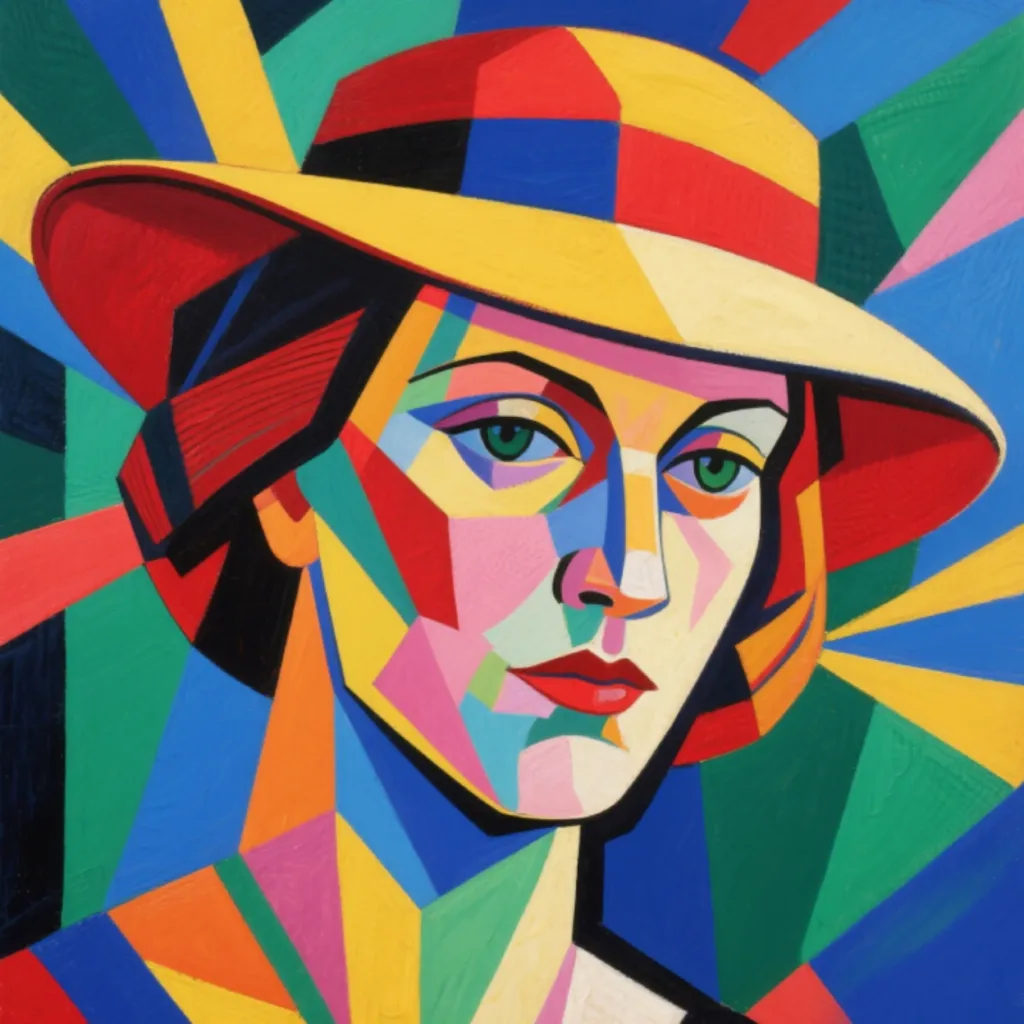
In Picasso’s career, this work was a crucial stepping stone towards Cubism, like a resounding clarion call heralding the dawn of a new artistic age.
The Details of Breakthrough and Individuality
The creation of this painting holds many details about breaking barriers and celebrating personality, and it is these fragments that give it such vibrant life.
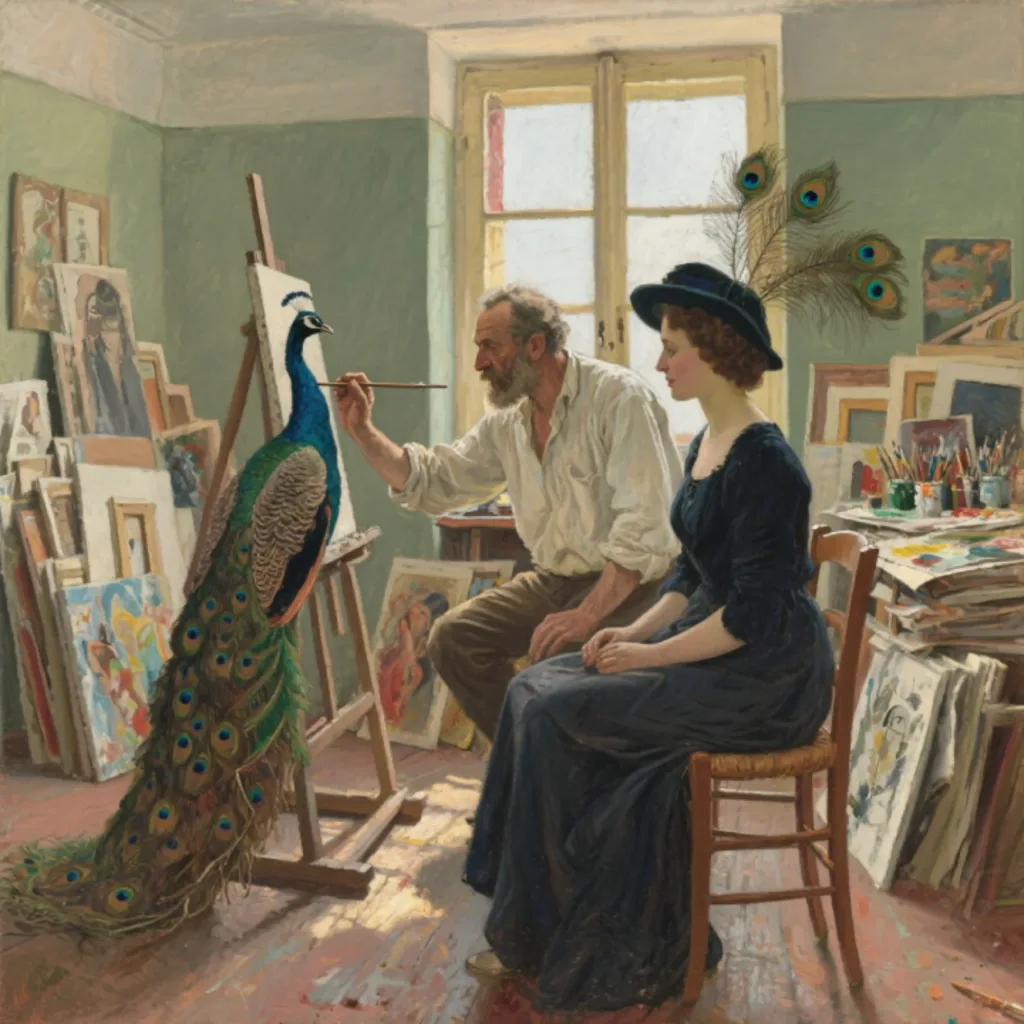
In the late autumn of 1905, a light rain drizzled over Paris. Picasso’s studio was piled high with drafts and paints, the air thick with a restless energy. Olga walked in wearing a newly bought wide-brimmed hat, a long peacock feather tucked into its band. The rain dampened the tips of her hair but did nothing to dim the light in her eyes.
“So, what do you think of this hat?” Olga asked, twirling with a smile.
Picasso’s gaze was instantly captured. He stared at the hat, then at Olga, and suddenly seized a brush, dipping it in red paint and smearing it onto the canvas. His strokes were fast and urgent, as if to unleash the fire within him.
While creating the painting, Picasso and Olga would often argue late into the night. Olga wanted the hat’s colors to be softer, but Picasso insisted on using the most intense hues. “This isn’t just a hat,” he declared passionately. “I am painting your soul, and it deserves to be this fervent!” In the end, Olga was convinced. She even brought him various brightly colored fabrics to use as a color reference.
Once, to perfect the feather on the hat, Picasso went to the market and bought a peacock, carefully studying the sheen and form of its plumage. He placed the peacock in a corner of the studio while Olga sat opposite him wearing the hat. The woman and the bird became a peculiar and beautiful scene. His neighbors thought he had gone mad, but Picasso paid them no mind. “Art,” he said, “is about daring to do what others dare not.”
In 1906, Woman with a Hat was exhibited in Paris and caused an immediate uproar. Conservative critics condemned it as “ugly” and “chaotic,” calling Picasso “a destroyer of art.” But young artists praised it lavishly, seeing it as “full of power” and “opening a new door.” A painter named Matisse stood before it for a long time and remarked, “That kid Picasso, he’s got some real nerve!”
The painting was later bought by a collector who loved avant-garde art. During World War II, to escape the ravages of war, the collector hid the painting in the false bottom of an old suitcase, traveling from place to place to keep it safe. Today, it is treasured in the Museum of Modern Art in Paris, attracting countless visitors who seek individuality and breakthrough.
We didn’t just copy it; we transformed its energy into design. This case is not a mere imitation, but a tribute. It carries the same spirit—the courage to express a unique self, the daring to break free from societal constraints, and the will to let one’s personality radiate through time.
Today, those unrestrained lines and intense blocks of color are condensed onto the case in your palm. That brilliant hat remains striking, and the peacock feather has become a unique pattern—a reminder that all acts of courage eventually become dazzling badges of honor in our lives. Every line pulses with the rhythm of individuality; every color carries the desire to defy the mundane. What you hold is not just a phone case, but a concentrated portrait of emotion—a sliver of soul, tucked in your pocket.
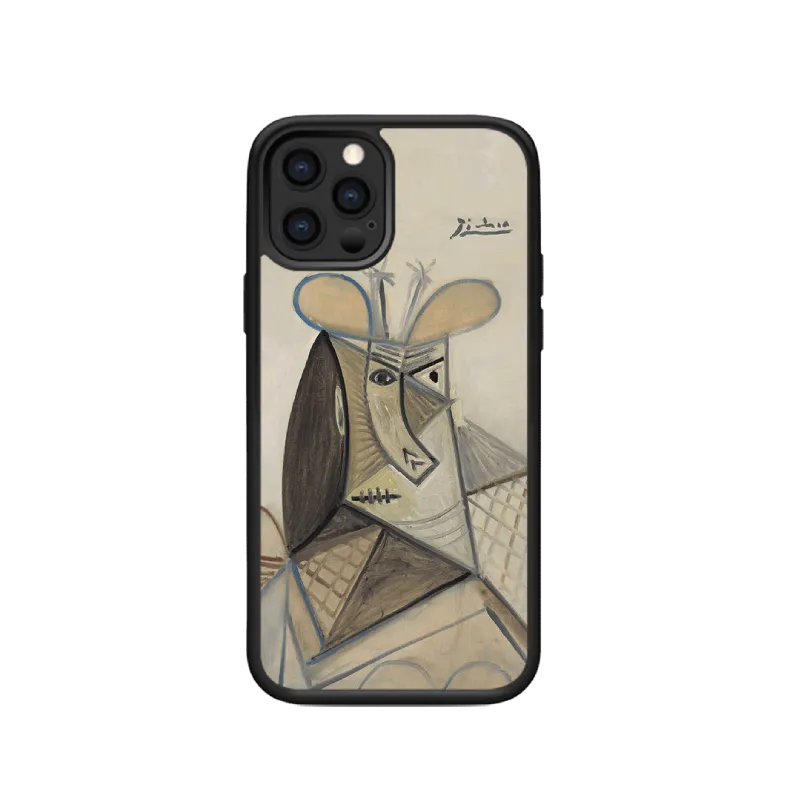
Why Translate a Painting into a Phone Case?
Because you carry more than a phone; you carry a private declaration.
This case is a private art gallery, a testament to an individuality that is hard to speak but longs to be expressed.
Because individuality itself deserves to be celebrated.
It doesn’t conform, yet it shines. It is intense, unrestrained, and carries a fearless edge—just like life itself.
Because we don’t sell a style; we sell courage.
Each design has its origin, its story, and a touch of rebellion. No shortcuts. No templates.
Born for life in New Zealand: slim, durable, and full of soul.
Take it with you while speeding down an Auckland motorway, weaving through the streets of Queenstown, or climbing the peaks of the South Island. It will accompany your story, wherever it goes.
OWAYKI: Art You Can Hold
At OWAYKI, we don’t see a phone case as an accessory, but as a compact manifesto of individuality.
Each design is linked to a real work of art, a moment in history, or an aspect of our personality we’ve dared not reveal.
You don’t need an art degree to own it. Just a genuine desire to express your unique self.
This case is born from a rebellious era, inspired by a woman who dared to let her personality shine.
Limited Edition — For Those Who Understand
We don’t mass-produce stories.
Each Picasso-inspired case is a limited print and will not be restocked.
Because some stories are meant to be told only once.

